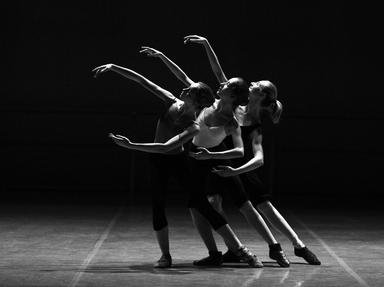Quiz Answer Key and Fun Facts
1. Igor Stravinsky was born in 1882 in Oranienbaum, a suburb of a large city. His father, an operatic bass, mixed with composers such as Borodin, Rimsky-Korsakov and Mussorgsky while singing in the aforementioned large city. What nationality does this make young Igor?
2. Despite a thoroughly musical upbringing, Stravinsky went on to study law at the University of Saint Petersburg. However, he was unable to take his final examinations in 1905 as the university was temporarily closed in the aftermath of which event?
3. Another man to have studied law at the University of Saint Petersburg is Sergei Diahgilev, the founder of the Ballets Russes. He commissioned Stravinsky to write 'The Rite of Spring' for his 1913 Paris season but had previously commissioned two other ballets. Which was the first, in 1910?
4. As mentioned in the previous question, 'The Rite of Spring' premiered in Paris in 1913. In which newly constructed theatre was it first performed, named for one of the most famous streets in Paris?
5. Now for some questions on the piece itself. 'The Rite of Spring' is split into two parts, the first of which is called the 'Adoration of the Earth'. Typically this is divided into seven episodes; which of the following is NOT one of them? Note: These are the English translations, original French is in the Interesting Information.
6. The third episode of Part II is called 'Glorification of the Chosen One'. What has the young girl been chosen for, also the title of the second part?
7. The original choreography for 'The Rite' was done by which Russian dancer, famous for his collaboration and love affair with Diahgilev at the Ballets Russes?
8. The first performance of 'The Rite of Spring' is arguably one of the most controversial performances of classical music of all time. Before the curtain had even risen the audience were unsettled and before long the disturbance was so loud that the music of the orchestra couldn't be heard by the dancers on the stage, with the steps having to be shouted from the side. A member of the orchestra is quoted as saying, "Everything available was tossed in our direction, but we continued to play on." One of the primary reasons cited for the riot was the mutual animosity between two social groups in the audience. The first were wealthy traditionalists and the others which were free spirits, named for an historical region of Europe?
9. The ballet ran for a further five nights in Paris. Which Italian opera composer attended the second performance on the second of June, calling the choreography ridiculous and the music "the work of a madman"?
10. After the Paris run and the subsequent four performances in London, the outrageous original choreography was lost and not resurrected until the 1980s. However, the ballet was newly choreographed in 1920 by which man, the male lead at the Ballets Russes from 1915 to 1921? Hint: He was Russian but is better known by the French transliteration of his name (given here).
Source: Author
pagea
This quiz was reviewed by FunTrivia editor
LadyCaitriona before going online.
Any errors found in FunTrivia content are routinely corrected through our feedback system.
